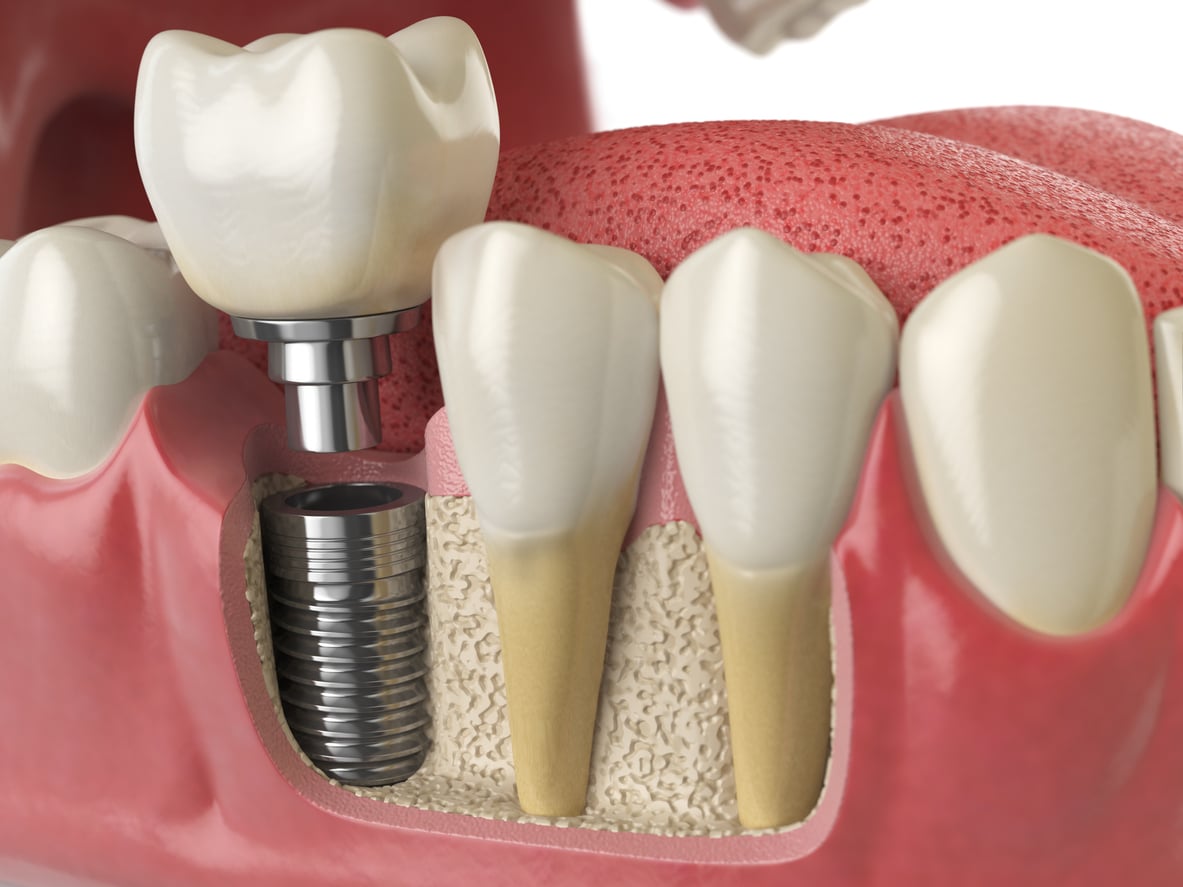Would my dental condition be worse and be too late to have a simple filling at a dental office? If the caries were minor, you likely still have enough tooth structure to support a crown or a partial crown called an onlay. Placing a dental crown is a commonly performed treatment to remove the decayed area and place a cap that exactly fits onto the vacated tooth area.
Onlays require much less tooth reduction than crowns and are a more conservative treatment. However, it is more technique sensitive. Not many dentists do onlays or partial crowns.

What is a Tooth Post?
When you do not have enough tooth structure to support a dental crown and an infection has damaged the nerve, you will need a root canal treatment by removing the nerve (the pulp) and sealing the root canal with the rubber-like sealer, and placing a post and core into the root canal. The post and core are solid composites or metals to support the crown.
The dentist performs a root canal treatment to create a strong foundation for the crown to be placed onto it. However, it is imperative to evaluate your tooth and the size of the caries to decide whether the tooth can hold the crown with the post and core before you start the root canal treatment.
If we diagnose that the tooth does not have enough tooth structure, even with a post and core, we need to take the tooth out. Then we place an implant, which is usually the best treatment option after the tooth extraction.
Root canal treatment means removing not only the nerve but also the blood vessels. Then, we fill the core with resin or cast metal. When blood circulation stops at the tooth's root, your tooth is non-vital and becomes fragile.
After root canal treatment, you must not place partial crowns, onlays, or fillings. Those will act like a wedge and break the tooth in two eventually. Once you have the vertical fracture into the supporting bone, you must take the tooth out because bacteria in the mouth get into the bone through the fracture line causing bone loss, and there is no treatment to fix the vertical fracture.

Your only option after the root canal treatment is to have a crown covering the entire tooth from the outside to avoid the root fracture. The crown protects and reinforces the tooth from the outside to prevent a vertical fracture.
Minimum tooth reduction is generally better for the crowns and partial crowns (Onlays) to last longer. More foundation will make things last longer. That is also true for dental treatment.
When you see no tooth structure above the gum line, making a crown that lasts for a long time, even with the post and core, is challenging.
The post and core are like columns and foundations of a structure. They support a building roof ( a crown) and transfer lateral and vertical loads to the jaw bones.
After all the caries is removed, we usually need to take the tooth out if no tooth remains above the gum line.
What is a Tooth Post?
A dental post is a reinforcement added to an existing tooth that is still in place. The dental post helps stabilize and secure a tooth that has undergone root canal treatment.
When you see no tooth structure above the gum line, making a crown that lasts for a long time, even with the post and core, is challenging.

The post and core are like columns and foundations of a structure. They support a building roof ( a crown) and transfer lateral and vertical loads to the jaw bones.
After all the caries is removed, we usually need to take the tooth out if no tooth remains above the gum line.
What's the Average Cost of a Root Canal and Crown
Please note that what tooth is infected and in need of root canal therapy. The molars are most expensive, as they require more work due to more root canals (3-4 canals). All prices vary by region and specific dental office, though, so take note of the ranges.

Keep in mind that after the root canal, we will need to put in a post and a crown, which can add $200-400 for the post and $1,300 to 1700 for the crown to the total bill.
Factors That Determine the Choice of Fillings or Crowns
- If you have intact roots and nerves, you will need a crown or onlay.
- If you have a root-canaled tooth (you have done root canal treatment in the past), you will need a crown. You will need a tooth extraction if you do not have enough tooth structure to support the crown.
- When the tooth develops a vertical crack into the root, you will need an extraction and an implant crown.

- Is the a price difference between the front teeth and the back teeth? Front teeth are generally a bit more expensive, depending on the dental office. Most people would not mind slightly different colored crowns in the back, but not in the front. In the cosmetic area (front teeth area), you do not want an uneven gum line or a dark gum color because the gray implant color shows through the thin gum.



